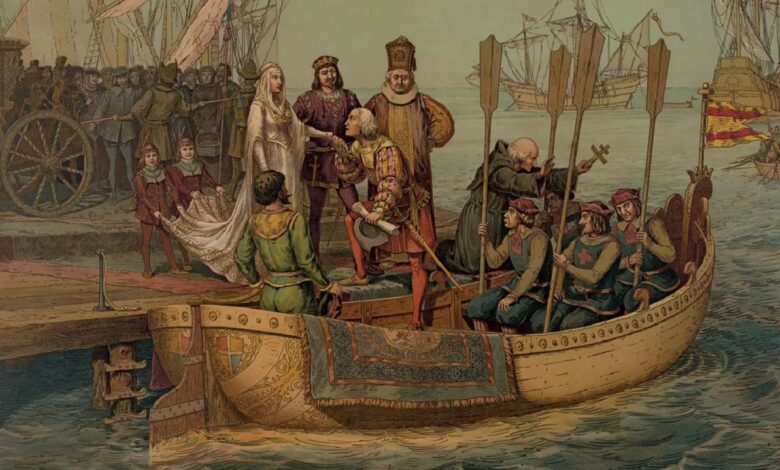How United States Of America Was Discovered, Columbus Journey

Columbia : Christopher Columbus, a sailor of unwavering determination, embarked on a daring transatlantic voyage in 1492. His unwavering conviction was to find a westward route to Asia, a continent brimming with riches and spices. However, fate had a different course charted for Columbus, leading him to instead set foot on the pristine shores of the Bahamas, unknowingly becoming the harbinger of a new era – European colonization of the Americas.
Columbus’ voyage was not a solo expedition. He commanded a fleet of three ships – the Niña, the Pinta, and the Santa Maria. These courageous sailors braved the vast unknown, venturing into the expansive Atlantic Ocean with the hope of reaching the fabled lands of the East.
After making landfall in the Bahamas, Columbus, believing he had reached the Indies, explored the surrounding islands and established a settlement. He then set sail for his return voyage, facing perilous storms and treacherous currents before finally arriving back in Europe in 1493. His return sparked a frenzy of interest and exploration, paving the way for a wave of European expeditions to the newly discovered lands.
Columbus’s voyages, while driven by a quest for a new trade route to Asia, ushered in a period of dramatic change for the Americas. The arrival of Europeans brought about widespread exploration and colonization, forever altering the course of history for both continents. It’s important to acknowledge that this era also brought about devastating consequences for the indigenous populations of the Americas.
Today, the legacy of Christopher Columbus is a subject of much debate. While some hail him as a courageous explorer who opened up new worlds, others criticize the exploitation and violence that followed European colonization. Regardless of perspective, Columbus’s voyages undeniably represent a pivotal moment in human history, marking the beginning of an era of transatlantic exploration and exchange.
It’s important to note that there is evidence suggesting that Vikings may have reached North America centuries before Columbus. However, Columbus’s voyages are widely considered the beginning of the sustained European exploration and colonization of the Americas.
The arrival of Columbus sparked a Columbian Exchange, a transfer of plants, animals, diseases, and cultures between the Americas, Europe, and Africa. This exchange had a profound impact on the world, shaping the course of human history in numerous ways. For example, European crops such as wheat, rice, and sugarcane were introduced to the Americas, while American crops like maize (corn), potatoes, and tomatoes were brought to Europe and Asia. The exchange of animals also had a significant impact, with horses being introduced to the Americas and devastating diseases like smallpox being brought to the New World by Europeans.
The Columbian Exchange also led to a significant transfer of cultures. European languages, religions, and customs were introduced to the Americas, while indigenous American cultures were often suppressed or destroyed. The exchange of cultures continues to this day, as the Americas have become a melting pot of different cultures and traditions.
In conclusion, Christopher Columbus’s voyages, while not achieving their original goal of finding a new route to Asia, nevertheless marked a pivotal moment in human history. They ushered in an era of exploration and exchange that forever changed the world.




